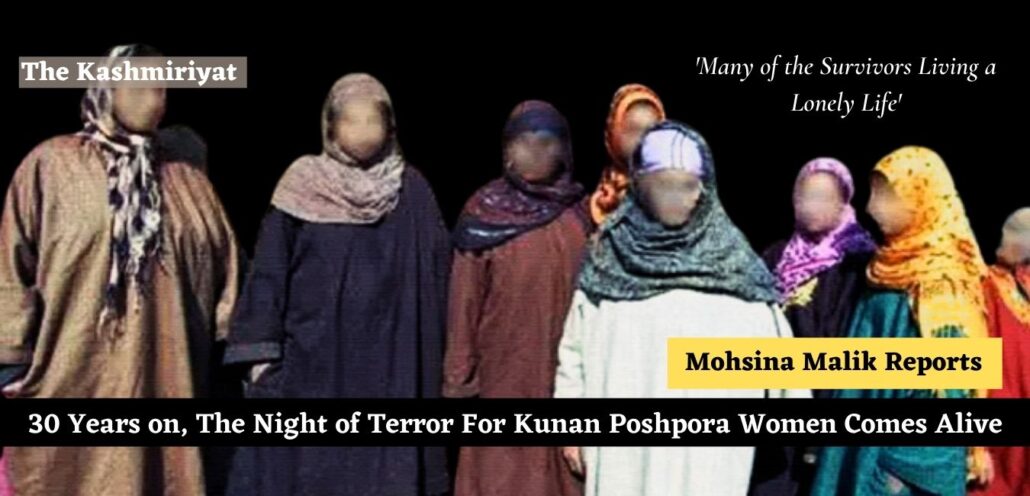
Mohsina Malik
As an aftermath of the insurgency during the ‘90s, every Kashmiri household was impacted as the region started turning into the most densely militarized zone in the world.
Since the ’90s, thousands of Kashmiri men have been disappeared, hundreds of women raped. Kashmiris became victims of extrajudicial killings and torture. Different tools and tactics have been used to oppress the voices, one of them being rape.
Sports Medicine Pathology and Pharmacology | Undergraduate Catalog injectable steroids for sale in the usa pro sports tape: clinical pharmacology drug monograph | scriptsave wellrx
Kupwara is a border district of Kashmir, where twin villages—Kunan-Poshpora are located. On the intervening night of 23-24 February 1991, more than 300 personnel of 4 Rajputana Rifles and 68 Mountain Brigade entered the villages and cordoned off the whole area. More than 60 women of aging seventeen and above were raped and more than 200 men were physically tortured.
People of the twin villages were of the notion that it will be a cordon and army personnel will leave the village after that. But it became a nightmare for the people of Kunan-Poshpora, that would haunt them even years after.
What happened on the intervening night of 23-24 February 1991 in Kunan-Poshpora?
The army personnel raided the area that night, entered the houses, asked the men to leave, while women were told to stay inside their houses. Young, adult, old, pregnant, disabled women were raped by 4-5 personnel in turns, and men were physically tortured; they were beaten, and their genitals were electrocuted.
Women were raped at gunpoint, there were bruises all over their bodies, and their private parts bled.
I along with another reporter visited the area and spoke to the locals.
A few men were sitting in front of a shop, we approached them, and when we asked them about the events of that night, one among them told us, “ We don’t want to talk about that night. It has traumatized us and stigmatized the womenfolk of the area.”
Another local told us, “We don’t discuss that night with each other. We tried to forget that night although we couldn’t, we are afraid, we don’t even want to imagine that night”. “ The mass rape and torture still haunts the people of the area”, he added.
“Many media outlets ( local, national and international) visited us, nothing has happened since the past thirty years and the case lies in the closed files now. The incident took place in 1991, we got no justice all these years”, said another local. “My mother was raped, pointing towards a bystander, his mother was also raped, we approached the administration several times to demand justice for the survivors, but all went in vain”, he added.
Womenfolk and the aftermath of the Mass Rape
After this horrific incident, women who were raped felt devastated and lived lonely lives thereafter. Many young girls left schools, Women who were married were either divorced or abused, which ruined their lives. And as an impact, many unmarried women chose not to marry.
Six survivors have died since then, more than eighteen women have had their uterus removed and some are on medication.
An FIR (First Information Report) was filed on March 8th, 1991 after the villagers protested. A medical team was sent by the army for collecting forensic evidence but women refused to let them examine themselves citing discomfort as the reason.
Cover up by Boobli George Verghese ?
Boobli George Verghese was an Indian Journalist who headed the team of the Press Council of India in July 1991. He fabricated the reports which gave a clean chit to the army personnel. His report was a cover-up for the incident.
Kashmir Civil Society accused Verghese of covering up the truth and said that such individuals should be boycotted. In 2013, more than 50 survivors came forward to file a petition against the army personnel, wanting to reopen the case. “Elders of the families asked some of the survivors to remain silent because they were worried no one would marry them”.
The petition was filed in High Court. The survivors demanded justice and wanted no such incident to ever happen to anyone ever.
Between 2005-2011, the villagers fought to move the case to State Human Rights Commission (SHRC). An inquiry was carried out by SHRC and the allegations of mass rape were found out to be true. The SHRC ordered compensation for the forty women but the victims never received it, While the Indian State refused to believe the allegations.
In 2015, the army filed a petition in the Srinagar High Court asking to put a stay against the ordered investigation of Kunan-Poshpora mass rape. The then justice of the High Court, Tashi Rabstan, ordered a stay on the investigation which was an ex-parte hearing. The army claimed that there was a lack of evidence and hence the case should be closed.
In 2016, once again a petition was filed in the Supreme Court against the move of the Army who tried to withdraw the case, The police and army have tried to close the case and have filed several petitions in the past years to get a stay one the investigations.
Since 2014, 23 February is regarded as ‘Kashmiri Women Resistance Day’ in order to recognize the struggle of the women of Kashmir. Currently, the case is pending in two courts and the judgment is yet to come .
Khurram Parvez, a Kashmiri human rights activist, Chairperson of Asian Federation Against Involuntary Disappearances (AFAD) and Program Coordinator of Jammu Kashmir Coalition of Civil Society (JKCCS), once said, “Justice in situations like these doesn’t interest Supreme Court, it has been thirty years now, nothing has happened and it has been four years since we approached the SC, and they haven’t even taken the case out of the register.”
